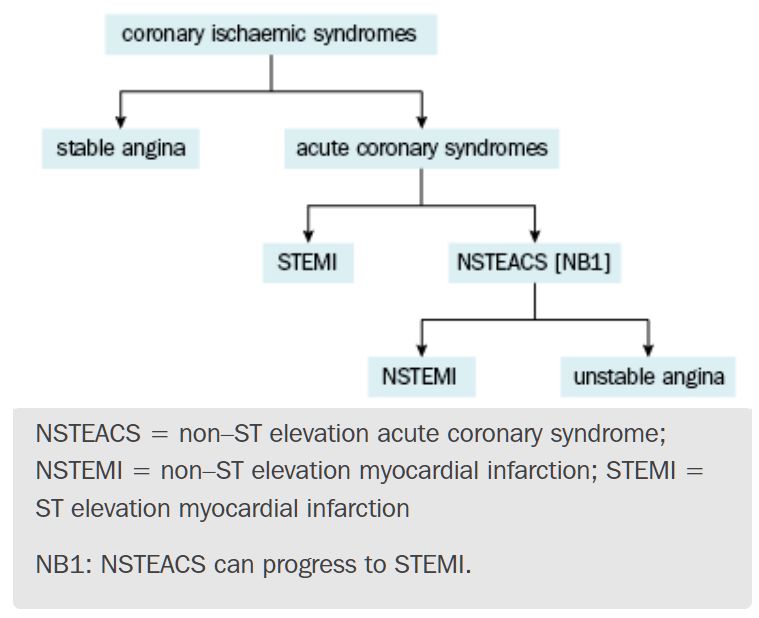ACUTE CORONARY SYNDROME-CORONARY ISCHAEMIC SYNDROMES
SUMMARY
1. Patients with new or increasing symptoms are classified as having ACS, whereas those with chronic symptoms are classified as having stable angina.
2. Acute coronary syndromes result from unstable atherosclerotic plaques or endothelial disruption, with associated transient or permanent thrombotic occlusion of the coronary arteries, leading to MI & ischaemia.
3. Stable angina is due to a relatively fixed coronary obstruction produced by stable atherosclerotic plaque.
4. Type 1 MI: new/worsening symptoms; atherothrombotic coronary occlusion (most commonly secondary to coronary plaque rupture) compromises myocardial blood flow.
5. Type 2 MI: asymptomatic;secondary to ischaemic imbalance between myocardial oxygen supply and/or demand, arising from coronary artery spasm/embolism, tachyarrhythmias, bradyarrhythmias, anaemia, respiratory failure and hypotension.
6. ACS are classified as type 1 MI, which are subdivided into STEMI & NSTEACS (non-ST elevated ACS); NSTEACS are further subdivided into NSTEMI (with elevated cardiac enzymes) & unstable angina (without elevated cardiac enzymes).

Reference(s)
Thygesen K, Alpert JS, Jaffe AS, Simoons ML, Chaitman BR, White HD, et al. Third universal definition of myocardial infarction. Circulation 2012;126(16):2020-35.
Wilkinson, I., Furmedge, D. and Sinharay, R. (2017). Oxford handbook of clinical medicine. Oxford: Oxford University Press. Get it on Amazon.
Feather, A., Randall, D. and Waterhouse, M. (2020). Kumar And Clark’s Clinical Medicine. 10th ed. S.L.: Elsevier Health Sciences. Get it on Amazon.
Hannaman, R. A., Bullock, L., Hatchell, C. A., & Yoffe, M. (2016). Internal medicine review core curriculum, 2017-2018. CO Springs, CO: MedStudy.
Therapeutic Guidelines. Melbourne: Therapeutic Guidelines Limited. https://www.tg.org.au [Accessed 2021].